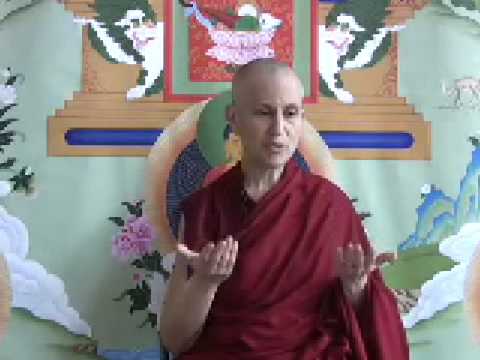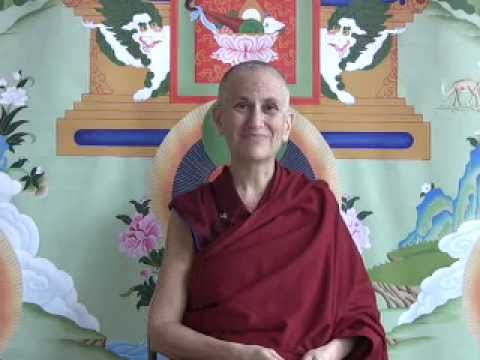Verse 36-4: Praising the buddhas and bodhisattvas
Part of a series of talks on the 41 Prayers to Cultivate Bodhicitta from the Avatamsaka Sutra (the Flower Ornament Sutra).
- The regular practice of praising the buddhas and bodhisattvas
- Recollecting the Buddha, Dharma, and Sangha
41 Prayers to cultivate bodhicitta: Verse 36-4 (download)
We’re going to finish the topic of praising others today, but hopefully we won’t finish praising others. In the verse here it said,
“May all beings praise the qualities of all Buddhas and bodhisattvas.”
This is the prayer of the bodhisattva when seeing someone praise another.
Praising the buddhas and bodhisattvas is a regular part of our practice. If we look in the guru puja, there are sections of making prostrations to them and sections of making requests to them, and in both of those sections the verses talk about the qualities of the enlightened ones. When we speak about the qualities of the enlightened ones we are praising those qualities.
There’s a whole practice called the recollection of the Buddha, the Dharma, and the Sangha. There are actually three different practices, one for each. You can attain serenity doing this kind of meditation. You recollect qualities of the Buddha, the Dharma, and the Sangha, and this kind of meditation brings a lot of joy to the mind. First of all because we’re contemplating that there are beings in this universe that have these qualities. And then, by extension, they must have practiced a path to gain those qualities. Therefore, if we practice the same path we too can gain those qualities. It gives us some increased self confidence as well as an awareness that there are all these holy beings in the universe who are there to guide and support us on the path and teach us.
When we really sink our minds into these verses and spend a lot of time thinking about them, phrase by phrase, there’s a lot of very deep meaning in them. Usually we tend to say them quite quickly, but if you’re able to study the descriptions of these attributes, then you see there’s a whole meditation to do behind it. You can study that in the commentaries, let’s say to the guru Puja or to whatever puja it is. If you’re doing Manjushri, or Chenrezig, or whatever, there’s an explanation to that and it usually explains these epitaphs and prostration verses, requesting verses. You can do that.
Or if you study in the philosophical teachings, the chapters that they have on the Three Jewels (like in Ornament of Clear Realization or The Sublime Continuum or in lamrim where they’ve extracted portions of these text and explained it in lamrim), then when you see these different terms and epitaphs, you get a whole feeling for the qualities of the Buddha, Dharma, and Sangha. It becomes something—when you contemplate them—that makes your mind very joyful, and very happy, and very peaceful. In fact, when you’re doing serenity meditation, when your mind is dull and it’s falling to the side of lethargy and laxity, they say that you need to meditate on something to uplift the mind. One topic is precious human life, but another topic is the qualities of the Three Jewels. It really uplifts the mind and steers us in a positive direction as well as creates a lot of merit. Remember at the same time we say that, we also have to praise sentient beings because they have the possibility of becoming the Three Jewels. And because they have hosts of other good qualities as well.
Venerable Thubten Chodron
Venerable Chodron emphasizes the practical application of Buddha’s teachings in our daily lives and is especially skilled at explaining them in ways easily understood and practiced by Westerners. She is well known for her warm, humorous, and lucid teachings. She was ordained as a Buddhist nun in 1977 by Kyabje Ling Rinpoche in Dharamsala, India, and in 1986 she received bhikshuni (full) ordination in Taiwan. Read her full bio.


